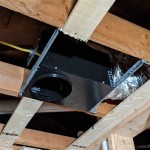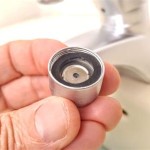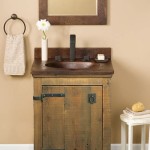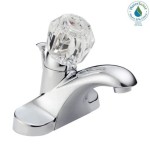How to Find an Upstairs Bathroom Leak
An upstairs bathroom leak can cause significant damage to your home, leading to water damage, mold growth, and structural problems. Identifying the source of the leak is crucial for promptly addressing the issue and preventing further damage. This article will guide you through the steps to effectively locate an upstairs bathroom leak.
1. Examine the Visible Signs
The first step is to visually inspect the bathroom for any signs of leakage. Look for water stains, discoloration, or bubbling on the ceiling, walls, or floors. Pay attention to the following:
-
Ceiling:
Check for water stains, discoloration, or sagging in the ceiling, particularly around the bathroom fixtures. -
Walls:
Examine the walls for water stains, peeling paint, or dampness. -
Floor:
Look for water pooling, warped floorboards, or a soft spot on the floor. -
Fixtures:
Inspect the toilet, sink, shower, and bathtub for leaks or signs of corrosion.
If any of these signs are present, the location of the leak may be obvious. However, sometimes the source of the leak is hidden, requiring a more thorough investigation.
2. Investigate the Plumbing System
After examining the visible signs, focus on inspecting the plumbing system within the bathroom. This will involve checking the following areas:
-
Toilet:
Run the toilet and observe the tank carefully. Look for any leaks around the tank, the bowl, or the base of the toilet. Flush the toilet and check for leaks in the flush valve and the fill valve. -
Sink:
Turn on the faucet and check for leaks around the faucet, the drain, or the pipe connections. -
Shower/Tub:
Turn on the shower or tub and observe the plumbing connections for leaks. Check for leaks around the showerhead, the faucet, the drain, and the pipes connecting to the shower or tub. -
Pipes:
Inspect the visible pipes in the bathroom for leaks, corrosion, or cracks. This includes pipes under the sink, behind the toilet, and inside the walls.
If you suspect a leak in a hidden pipe within the wall, you may need to use a specialized tool like a moisture meter or a thermal imaging camera to detect the source.
3. Check the Roof and Attic
The source of the leak could originate from the roof or attic, especially if the bathroom is located directly below the roof. To investigate this possibility, follow these steps:
-
Roof:
Inspect the roof for any signs of damage, such as missing shingles, cracks, or holes. Check for loose flashing around vents, chimneys, and skylights. -
Attic:
If possible, access the attic and look for water stains, damp spots, or signs of water damage on the underside of the roof, around the plumbing vents, or on the insulation.
If you find water damage in the attic, it's essential to address the roof leak to prevent further damage to your home.
If you're unable to identify the source of the leak after carefully inspecting all the possible areas, it's recommended to contact a professional plumber or a licensed contractor to diagnose and repair the issue. They have the necessary tools and experience to identify the exact location of the leak and recommend the appropriate solution.

Find Leak In Upstairs Bathroom

How To Check For Bathroom Leaks My Plumber Guide

Shower Leaking Through Ceiling 8 Likely Causes

Is Your Upstairs Shower Leaking Through The Ceiling 4 Steps To Take Now

Water Leaking From Second Floor Bathroom

Bathroom Leak Top 5 Causes Waterleak Co

Water Leaking From Upstairs Bathroom Answered By A Local Expert

How To Troubleshoot A Leaking Upstairs Bathroom 4 Steps

Leak From Upstairs Tiled Shower Doityourself Com Community Forums

Water Leaking On The Ceiling Downstairs From Upstairs Bathroom Plumbing Nightmare Diy Fix
Related Posts







